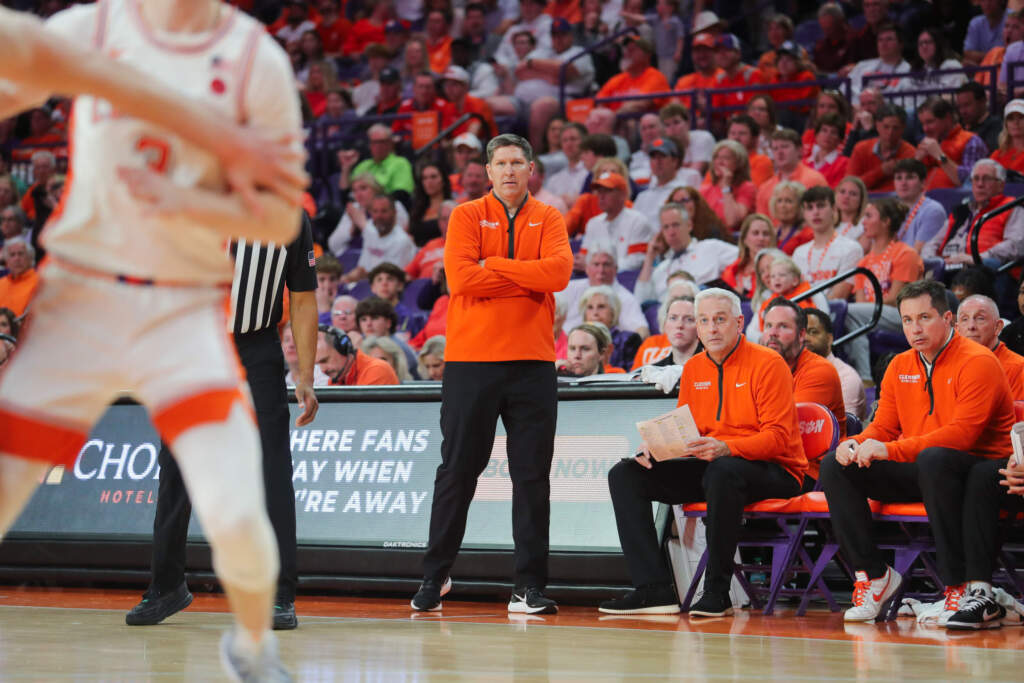Notes on the Atlantic Coast Conference Football Schedule
1. The schedule developed for ACC football will be a two-year schedule for the 2004 and 2005 seasons.
2. The schedule is flexible, in that it will be a one-division schedule unless the ACC has the ability to host a Championship Football Game. If the ACC has the ability to hold a Championship Game, then the schedule will allow the Conference to divide into two separate divisions. 3. The schedule uses a Divisional Model, but for the first two years, it will also fit the Big Ten Model. Two teams rotate on and two teams rotate off a team’s schedule each year.
4. The Divisions with the Primary Schedule Partners are:
| Division A | Division B |
| Maryland | Virginia |
| Clemson | Georgia Tech |
| N C State | North Carolina |
| Wake Forest | Duke |
| Florida State | Miami |
| Virginia Tech |
5. The primary scheduling criteria used is to maximize the current home and away order for each team in the ACC to minimize schedule disruption. In other words, if a team played another Conference opponent at home in 2003, it will play that opponent away in 2004.
6. The same playing partners will be in effect for the 2004 and 2005 seasons, allowing all schools to play home and away with each other before moving on to another set of playing partners.
7. The schedule and divisional alignment will be re-evaluated after the first two years to assure fairness and balance.
8. Future schedules after the first two years will take into account the pairings of this first two-year schedule in their development, in order to provide balance.
9. The ACC is committed that its teams will play all of the teams in the Conference in a regular, consistent rotation.
2004-05 Football Schedule
| Team | Opponents | Do Not Play | |||||||||
| UMD | CLEM | WAKE | NCST | FSU | UVA | GT | DUKE | VT | UNC | MIA | |
| CLEM | UMD | WAKE | NCST | FSU | UVA | GT | DUKE | MIA | UNC | VT | |
| WAKE | UMD | CLEM | NCST | FSU | DUKE | UNC | MIA | VT | UVA | GT | |
| NCST | UMD | CLEM | WAKE | FSU | GT | UNC | MIA | VT | UVA | DUKE | |
| FSU | UMD | CLEM | WAKE | NCST | UVA | DUKE | UNC | MIA | GT | VT | |
| UVA | UMD | CLEM | FSU | GT | DUKE | UNC | MIA | VT | WAKE | NCST | |
| GT | UMD | CLEM | NCST | UVA | DUKE | UNC | MIA | VT | WAKE | FSU | |
| DUKE | UMD | CLEM | WAKE | FSU | UVA | GT | UNC | VT | NCST | MIA | |
| UNC | WAKE | NCST | FSU | UVA | GT | DUKE | MIA | VT | UMD | CLEM | |
| MIA | CLEM | WAKE | NCST | FSU | UVA | GT | UNC | VT | UMD | DUKE | |
| VT | UMD | WAKE | NCST | UVA | GT | DUKE | UNC | MIA | CLEM | FSU |
| Team | Games | ||||||||
| 2004 | UMD | @CLEM | WAKE | NCST | FSU | @UVA | GT | @DUKE | @VT |
| CLEM | UMD | WAKE | NCST | @FSU | @UVA | GT | @DUKE | @MIA | |
| WAKE | @UMD | @CLEM | @NCST | FSU | DUKE | UNC | @MIA | VT | |
| NCST | @UMD | @CLEM | WAKE | FSU | GT | @UNC | MIA | @VT | |
| FSU | @UMD | CLEM | @WAKE | @NCST | UVA | DUKE | UNC | @MIA | |
| UVA | UMD | CLEM | @FSU | @GT | @DUKE | UNC | MIA | @VT | |
| GT | @UMD | @CLEM | @NCST | UVA | DUKE | @UNC | MIA | VT | |
| DUKE | UMD | CLEM | @WAKE | @FSU | UVA | @GT | UNC | @VT | |
| UNC | @WAKE | NCST | @FSU | @UVA | GT | @DUKE | MIA | VT | |
| MIA | CLEM | WAKE | @NCST | FSU | @UVA | @GT | @UNC | VT | |
| VT | UMD | @WAKE | NCST | UVA | @GT | DUKE | @UNC | @MIA | |
| 2005 | UMD | CLEM | @WAKE | @NCST | @FSU | UVA | @GT | DUKE | VT |
| CLEM | @UMD | @WAKE | @NCST | FSU | UVA | @GT | DUKE | MIA | |
| WAKE | UMD | CLEM | NCST | @FSU | @DUKE | @UNC | MIA | @VT | |
| NCST | UMD | CLEM | @WAKE | @FSU | @GT | UNC | @MIA | VT | |
| FSU | UMD | @CLEM | WAKE | NCST | @UVA | @DUKE | @UNC | MIA | |
| UVA | @UMD | @CLEM | FSU | GT | DUKE | @UNC | @MIA | VT | |
| GT | UMD | CLEM | NCST | @UVA | @DUKE | UNC | @MIA | @VT | |
| DUKE | @UMD | @CLEM | WAKE | FSU | @UVA | GT | @UNC | VT | |
| UNC | WAKE | @NCST | FSU | UVA | @GT | DUKE | @MIA | @VT | |
| MIA | @CLEM | @WAKE | NCST | @FSU | UVA | GT | UNC | @VT | |
| VT | @UMD | WAKE | @NCST | @UVA | GT | @DUKE | UNC | MIA |
Most Commonly Asked Questions ACC Men’s and Women’s Basketball Scheduling
Q. How many regular-season conference games will be played for men’s basketball and why? A. We will maintain a 16-game regular-season conference format. This allows each team the opportunity to continue to play 11 non-conference regular-season games. In conference play, it allows each team to play every institution at least once a year and a minimum of three times every two years. Finally, the 16-game conference schedule allows the ACC the ability to full fill the leagues current television contract and maintain conference rivalries. Q. How many regular-season conference games will be played for women’s basketball and why? A. A 14-game regular-season conference schedule has been selected to allow greater flexibility in the scheduling of non-conference opponents, not only out of region but also to include tournament events and intra-state rivalries that have become important to the growth and development of women’s basketball. In conference play, it allows each team to play each institution at least once a year and also protects conference rivalries allowing for a home/away series every year. Additionally, this schedule meets the leagues current television requirements and meets NCAA requirements to receive automatic qualification to the NCAA Tournament. Q. What is the difference between a primary partner and a rotating partner? A. A primary partner is a team that you are guaranteed to play twice – home and away – every year. Each school will have primary partners assigned which can be changed, after a minimum of two seasons of play. Rotating partners are the remaining schools that you will play a combination of once or twice in any given season.Q. Why are the primary partners different for the men and women? A. The rivalries and traditions for men’s and women’s basketball have developed differently. It was appropriate to have different models to maintain the traditions for both men’s and women’s basketball.Q. How were primary partners decided? A. Throughout the expansion process, lengthy discussions between league officials ensued and a commitment was made to make every effort to protect one traditional rivalry per member institution, inclusive of new members.Q. When will the actual schedule designating all primary and rotating partners be announced? A. We hope to have that available after the New Year.Q. Why wasn’t a 20-game round-robin conference schedule selected? A. It compromises the ACC’s commitment to schedule nationally in basketball. Specifically, it would reduce the number of non-conference opponents from 11 to seven, which would severely impact an institution’s ability to schedule highly regarded non-conference out of region opponents, traditional regional opponents and could influence negatively on a schools ability to play in special events and inter-conference challenges that have become synonymous with ACC Basketball. Q. If a team is only playing a conference opponent once, would it be permissible to play the team again, as a non-conference opponent? A. Yes, however it is an institutional decision to schedule a conference opponent for a second regular-season game; however it would not count toward their conference record for tournament seeding. Q. How much input did Virginia Tech and Miami have on the decisions about the conference scheduling models? A. Both institutions have been consulted throughout the process. (Note: Miami and Virginia Tech do not become voting partners until July 1, 2004.) Q. Why was this Basketball Tournament format selected? A. The decision was made in the sport of basketball that every institution would participate in the conference tournament to uphold the commitment of providing a positive student-athlete experience and maintaining the tradition that the men’s and women’s tournament have developed throughout the years. This tournament format provides an equitable and efficient bracket for an 11 member conference tournament. Q. How will the ACC Men’s Basketball Tournament ticket distribution be impacted? A. As in past expansions (Georgia Tech and Florida State), Miami and Virginia Tech will receive a pro-rated number of ACC Men’s Basketball tickets. (2005 – one-third, 2006 – two-thirds, 2007- full allotment)Men’s Basketball – Primary Partners Clemson — Georgia Tech & Florida State Duke – North Carolina & Maryland Florida State – Miami & Clemson Georgia Tech – Clemson & Wake Forest Maryland – Duke & Virginia Miami – Virginia Tech & Florida State North Carolina – Duke & NC State NC State – North Carolina & Wake Forest Virginia – Virginia Tech & Maryland Virginia Tech – Virginia & Miami Wake Forest – NC State & Georgia TechWomen’s Basketball – Primary Partners Clemson – NC State, Georgia Tech, Florida State, Wake Forest Duke – North Carolina, Virginia, Maryland, Miami Florida State – Miami, Georgia Tech, Clemson, Virginia Tech Georgia Tech – Clemson, Florida State, Maryland, Wake Forest Maryland – Virginia, Virginia Tech, Duke, Georgia Tech Miami – Florida State, Virginia Tech, NC State, Duke North Carolina – Duke, Wake Forest, Virginia, NC State NC State – Wake Forest, Clemson, Miami, North Carolina Virginia – Maryland, Duke, North Carolina, Virginia Tech Virginia Tech – Miami, Maryland, Florida State, Virginia Wake Forest – NC State, North Carolina, Georgia Tech, Clemson
Most Commonly Asked Questions ACC Football Scheduling
Q. How will the Conference be organized? Will it be in one division or two? A. If the ACC does not hold a Championship Football Game, then the league will be organized into one division. If the ACC is able to host a championship game, then the league will be divided into two divisions. A Divisional Schedule Model will be used as a base for the schedule in its first two years.Q. Why is the ACC schedule just for two years? A. Due to the uncertainties surrounding the championship game, the ACC has decided to develop a flexible, two year schedule for the 2004 and 2005 football seasons, that will allow the league to be one division if there is not a championship game, but with the ability to break into two separate divisions, if the ACC is able to have a championship game. After two years, the schedule and divisional alignment will be re-evaluated for fairness and balance. Q. Why does each team play the same teams in 2004 and 2005? A. The football schedule is designed in two-year increments which allows each school to play home and away with each of its current set of scheduling partners before moving onto a new set of scheduling partners. Q. How many regular season conference games will be played for football and why? A. Every team in the ACC will play eight conference games as they have since the league expanded in 1992. This allows each team to have a minimum of three non-conference opponents and provides the necessary flexibility in their non-conference schedules to be able to have a minimum of six home games every year, even if they have two home and away non-conference series scheduled. This also allows each team to have an equal number of home and away Conference games each year which is not the case with an odd number of Conference games.Q. What is the difference between the Divisional Schedule Model and the Big Ten Schedule Model? A. In the Divisional Model, the Conference would be split into two divisions, one of five teams the other of six. Each team, with the exception of Virginia Tech, will have a Primary Scheduling Partner in the other division which they will play each year. Because there are an odd number of teams, two teams in the larger division will not play each other each year. Two teams rotate on a team’s schedule every two years, and two rotate off every two years. In the Divisional Model it takes a six-year rotation for schools to play everyone in this model. In the Big Ten Model, the Conference would play in one division. Each school would most likely have two Primary Scheduling Partners they would play every year, with the other six games rotating among the other eight schools, two on, two off every two years. In the Big Ten Model, it would take a school eight years to rotate through the entire Conference.Q. What are the concerns or criteria in scheduling? A. The primary concern in scheduling is fairness, balance and to create as little disruption in each of our ACC teams’ schedules as possible with a desire to maintain as many of the rivalry games throughout the league as possible each year. This means a team which played a Conference opponent at home in 2003, will play that opponent on the road in 2004. Q. How were the Divisional Alignments and Primary Scheduling Partners decided? A. Throughout the expansion process, there have been lengthy discussions among league and school officials regarding the Divisional Alignments. These discussions were finalized at the ACC Fall Meetings in Charlottesville, Va., meetings with a desire to produce a fair division of teams.Q. If two teams in the Divisional Model were not scheduled to play a Conference home and away series, could they schedule a non-conference game? A. Yes. This could happen in either model. Several Big Ten schools have actually done this in recent years including Purdue and Indiana, who met last year in non-conference play to continue their rivalry. Q. How much input did Virginia Tech and Miami have on the decisions about the Conference scheduling models? A. Both institutions have been consulted throughout the process, and they were in attendance at the ACC Fall Meetings in Charlottesville, Va., and contributed to those discussions. (Note: Miami and Virginia Tech do not become voting partners until July 1m 2004.Q. Will future schedules after the first two years take into account the pairings of 2004 and 2005 in order to provide balance? A. Yes. The ACC is committed that its teams will play all of the other teams in the Conference in a regular, consistent rotation.Q. If the ACC were to break out into a two division format, what would those divisions look like and who would be the primary scheduling partners? A. Here are the divisions which were agreed upon for the 2004 and 2005 football seasons, with the primary scheduling partner listed. As a reminder, the ACC will be in a one division alignment, unless it has the ability to host a championship game.
| Division A | Division B |
| Maryland | Virginia |
| Clemson | Georgia Tech |
| N C State | North Carolina |
| Wake Forest | Duke |
| Florida State | Miami |
| Virginia Tech |

 Pitt
Pitt 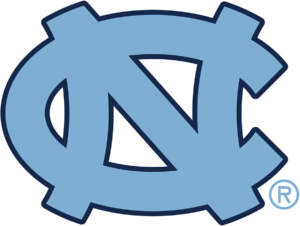 North Carolina
North Carolina  Elon
Elon  SMU
SMU  Syracuse
Syracuse  Alabama
Alabama  Tennessee
Tennessee  Charlotte
Charlotte  USC Upstate
USC Upstate  Ohio State
Ohio State  Georgia State`
Georgia State`  Ohio University
Ohio University  Virginia Tech
Virginia Tech  Indiana
Indiana  South Carolina
South Carolina 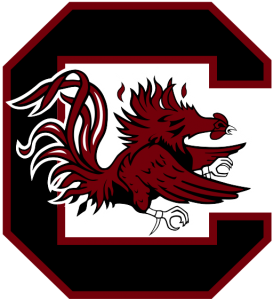 South Carolina
South Carolina  Campbell
Campbell  UAB
UAB  East Tennessee State
East Tennessee State  LSU
LSU  South Carolina
South Carolina  App State
App State  North Carolina A&T
North Carolina A&T  Charlotte
Charlotte 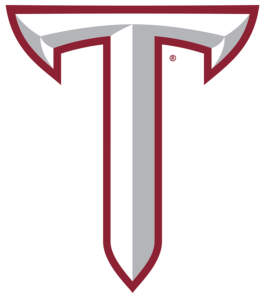 Troy
Troy  Georgia
Georgia  VCU
VCU  Georgia
Georgia  Stanford
Stanford  USC Upstate
USC Upstate 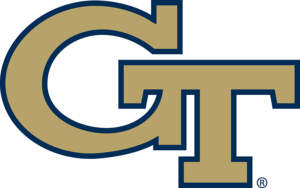 Georgia Tech
Georgia Tech  Wofford
Wofford  California
California  Queens
Queens  Georgetown
Georgetown  Norfolk State
Norfolk State  Louisville
Louisville  Charleston Southern
Charleston Southern  Syracuse
Syracuse  Virginia
Virginia  Florida State
Florida State  Wake Forest
Wake Forest 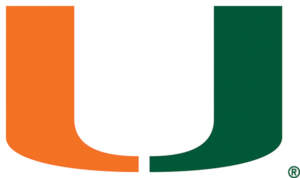 Miami (Fla.)
Miami (Fla.)  Notre Dame
Notre Dame 




